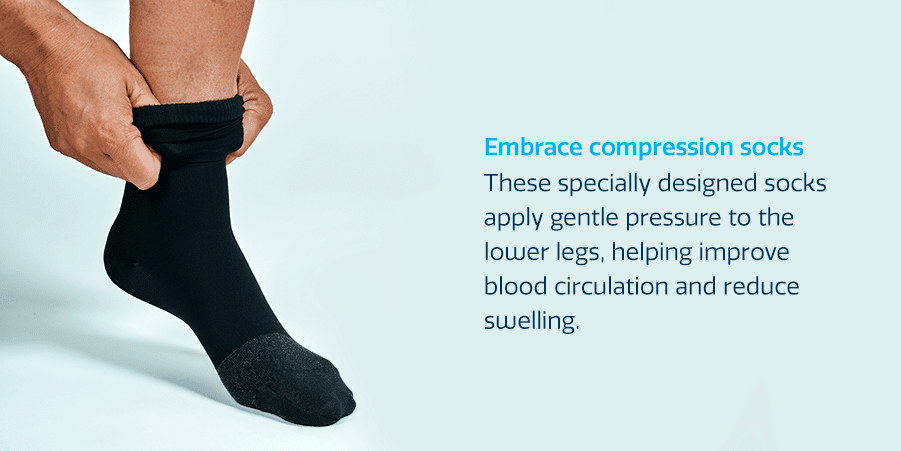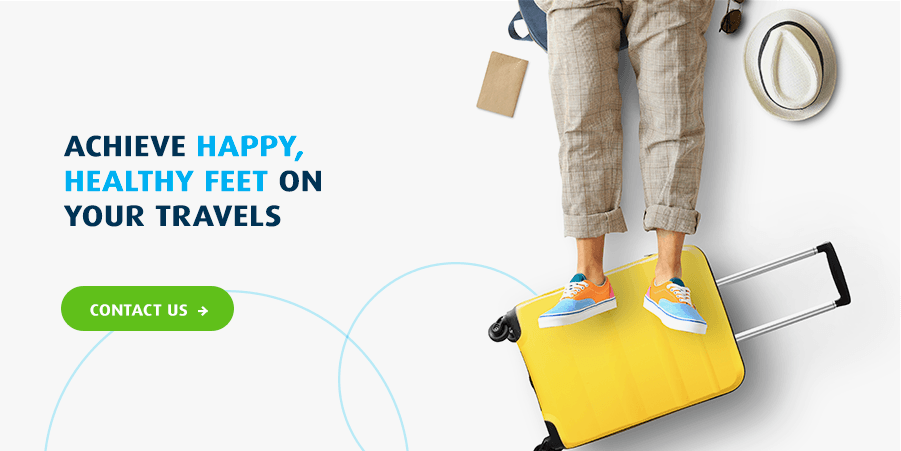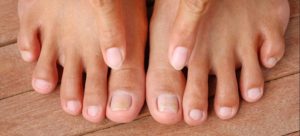Traveling with swollen feet is a common issue many travelers experience. The last thing any explorer wants is for their adventures to be hindered by swollen and achy feet, which can make walking and exploring a challenging experience. But there are precautions you can take to avoid this issue before, during and after your flight or other travels.
3 Causes of Swollen Feet During Travel
Swollen feet during travel can be an uncomfortable and bothersome experience. It occurs when excess fluid accumulates in the feet, leading to discomfort, tightness and difficulty fitting into shoes. Travel, in particular, comes with risks that can lead to foot swelling:
- Being stationary: Whether on a long flight, car or bus ride, or train journey, remaining in a fixed position for extended periods can impede blood circulation in the lower extremities. As a result, blood can pool in the feet and ankles, leading to swelling and discomfort.
- Restricted space: Another factor contributing to swollen feet is restricted blood circulation. Tight spaces, cramped seats and prolonged immobility can compress blood vessels, hindering efficient blood flow to and from the legs and feet.
- Fluid retention: Changes in altitude, such as during air travel, can affect the body’s fluid balance and cause fluid to accumulate in the lower extremities.
Early Signs You Have Swollen Feet
While swelling may vary in severity, it often starts with subtle indications. Pay attention during travel to spot symptoms early, like:
- Visible swelling in the feet, ankles and lower legs
- Tightness or discomfort in the affected areas
- Shoes feeling tighter than usual
- Difficulty in moving or flexing the feet and ankles
- Skin feeling stretched or shiny in the swollen areas
- Reduced range of motion in the ankles
- Aching or throbbing sensation in the feet and legs
How to Prevent Swollen Feet During Travel
Preventive measures can effectively reduce the occurrence of swollen ankles while traveling. While some individuals may be more prone to swelling due to factors such as age, underlying medical conditions or genetic predisposition, implementing preventive measures can still provide significant benefits.
It’s always helpful to tailor the preventive strategies to your specific needs and consult a health care professional if you have any underlying health concerns.
Pre-Travel Preparations for Swollen Feet
Proper pre-travel preparations are key to ensuring comfort and minimizing potential health issues when embarking on a journey. But how far in advance should you start preparing?
Ideally, it’s best to begin pre-travel preparations a few weeks before your trip. This timeline allows you enough time to implement beneficial habits and make these necessary arrangements:
- Choose the proper footwear: Opt for comfortable and supportive shoes that provide adequate cushioning and arch support. Avoid tight or constrictive footwear that can restrict blood flow. Breathable materials and adjustable closures can help accommodate foot swelling during your journey.
- Embrace compression socks: These specially designed socks apply gentle pressure to the lower legs, helping improve blood circulation and reduce swelling.
- Wear loose-fitting clothing: Choose loose, breathable clothing during your travels. Loose-fitting garments allow for better air circulation and provide more comfort to your legs and feet.
- Stay active and exercise: Engage in regular exercise and physical activity leading up to your trip. Strengthen your leg muscles and improve circulation through activities like walking, jogging or swimming.
- Stay hydrated: Start hydrating well before your trip and continue to drink plenty of water throughout your journey.
- Check seat options: Select seats with extra legroom or consider upgrading to premium seating. Having more space to stretch your legs and move around can help prevent swelling and enhance overall comfort.

Preventive Measures During Travel for Swollen Feet
Remember to customize these measures based on your needs and consult with a health care professional if you have any concerns or specific medical conditions. Here are some tips to follow as you travel:
- Remove restrictive footwear: If you’re wearing shoes or socks that feel tight or constrictive, consider removing them briefly.
- Avoid crossing legs: Sitting with crossed legs can impede blood flow and contribute to swelling. Instead, keep your feet flat on the floor or use a footrest if available. Maintain good posture and avoid positions that may restrict blood circulation.
- Stay active and move regularly: Take every opportunity to move and stretch your legs during your journey. Get up and walk around the cabin whenever possible or perform seated exercises if you cannot leave your seat. Flex and extend your ankles, rotate your feet and wiggle your toes to promote blood circulation.
- Stay hydrated: Drink plenty of water throughout your journey to stay hydrated. Proper hydration helps maintain blood circulation and reduces the risk of fluid retention. Avoid excessive alcohol and caffeine consumption, as they can contribute to dehydration.
- Watch your sodium intake: Monitor your salt intake, as high sodium levels can lead to fluid retention. Choose low-sodium snacks and meals when possible.
Tips for Swollen Feet During Travel
Despite taking preventive measures, you may still notice your feet starting to swell during a flight or another journey. Don’t worry — you can take steps to address the issue and alleviate discomfort.
- Use cold compresses: Apply a cold compress or ice pack wrapped in a thin cloth to your feet and ankles. Cold temperatures can help reduce swelling and provide temporary relief. If you are concerned, inform a flight attendant. They can provide assistance, offer ice packs or cool towels, or advise on any available medical support.
- Massage your feet: Gentle foot and leg massages can promote blood flow and reduce swelling. Use your hands or a massage ball to apply gentle pressure and massage your feet, ankles and calves.
- Practice deep breathing exercises: Deep breathing exercises can promote relaxation and improve blood circulation. Take a slow, deep breath and focus on fully expanding your diaphragm before you slowly exhale.
Post-Travel Care to Relieve Swollen Feet After Your Journey
After a long journey, give your feet some post-travel care to reduce any lingering swelling and promote recovery.
- Rest and elevation: Once you reach your destination, take some time to rest and elevate your feet. Elevating your feet above heart level helps reduce swelling by assisting fluid drainage and encouraging blood circulation.
- Gentle stretching: Perform gentle stretching exercises for your feet, ankles and calves. Rotate your ankles, flex and point your toes and perform simple calf stretches.
- Warm foot soak: If your feet feel sore or swollen, soak them in warm water. The warmth can help relax the muscles and promote blood circulation. Add some Epsom salts or essential oils to the water for added relaxation and potential anti-inflammatory benefits. Note that some people shouldn’t use Epsom salts, like those with kidney disease or impaired kidney functions.
- Professional care: Contact professional podiatrists for assistance, like those from Foot & Ankle Surgical Associates, for added support and care.
Achieve Happy, Healthy Feet on Your Travels
Foot & Ankle Surgical Associates podiatrists are experts in assessing and addressing potential foot problems that may have emerged during your travels. Through comprehensive examinations, our staff will evaluate your foot structure, joint mobility and muscle strength, providing personalized recommendations for your recovery.
We also offer specialized foot massages and treatments to reduce swelling, relieve tension and enhance blood circulation. These treatments, administered by skilled professionals, significantly contribute to your post-travel recovery process.
Take the first step toward optimal foot health today! Call 360.754.3338 to schedule an appointment with Foot & Ankle Surgical Associates and let our expert team guide you in post-travel foot care.






